Triggers
Create
Function
.To create a trigger, start by creating a function. Navigate to the Functions section in the Database Navigator. Right-click to open the context menu and select Create New Function.
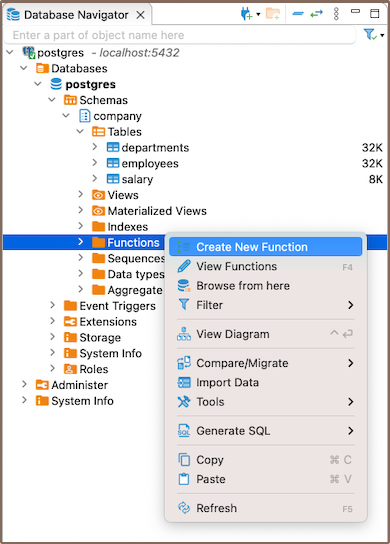
- Choose the function name, type, language, and return type (trigger.md) for your new function.
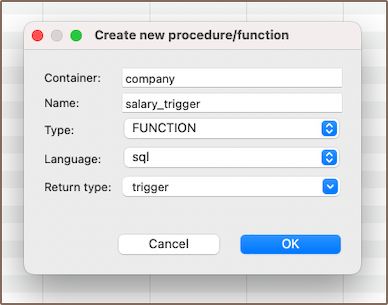
- In the Source section, write the function that will be called when the trigger is activated.
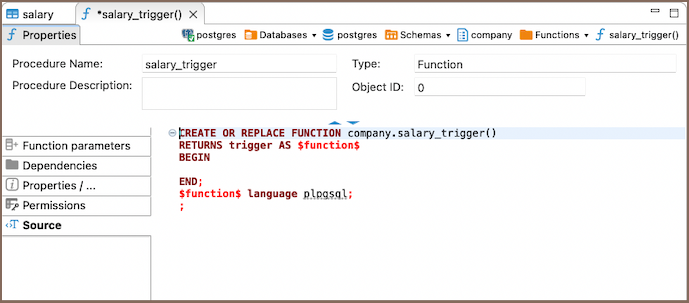
For example:
BEGIN
IF NEW.salary_amount < 0 THEN
RAISE EXCEPTION 'Error: Salary cannot be negative';
END IF;
RETURN NEW;
END;
Trigger
.Once you've created the function, create the trigger. Navigate to the Triggers section in the Properties editor of the relevant table. Right-click on the screen and select Create New Trigger.
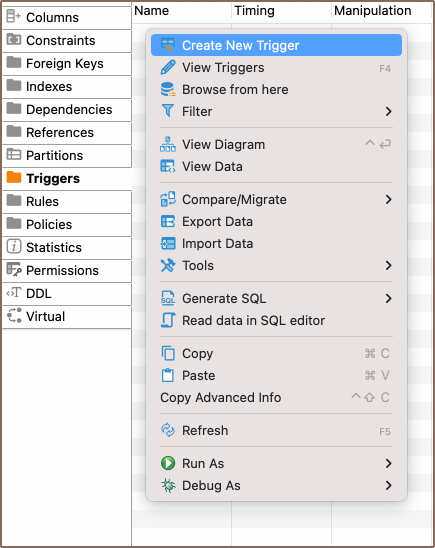
-
In the opened window, choose the trigger's name and the function to be used.
-
Finally, describe the code for the trigger.

For instance:
CREATE TRIGGER check_negative_salary_trigger
BEFORE INSERT
ON company.salary
FOR EACH ROW
EXECUTE function company.salary_trigger();
In this example, a salary_trigger() function is created that evaluates the new salary value (NEW.salary.md). If the
salary is negative, it throws an exception with an error message. Then, a check_negative_salary_trigger is established
to run this function before any INSERT or UPDATE operations on the "salary" table. Should the salary value be
negative,
an exception is triggered and the operation is stopped.
Modify
.To modify a function or trigger, navigate to the Database Navigator.
-
In the relevant sections, select the function or trigger you want to change.
-
Then, click View Function for functions or View Trigger for triggers. This action opens the selected item in an editable format.
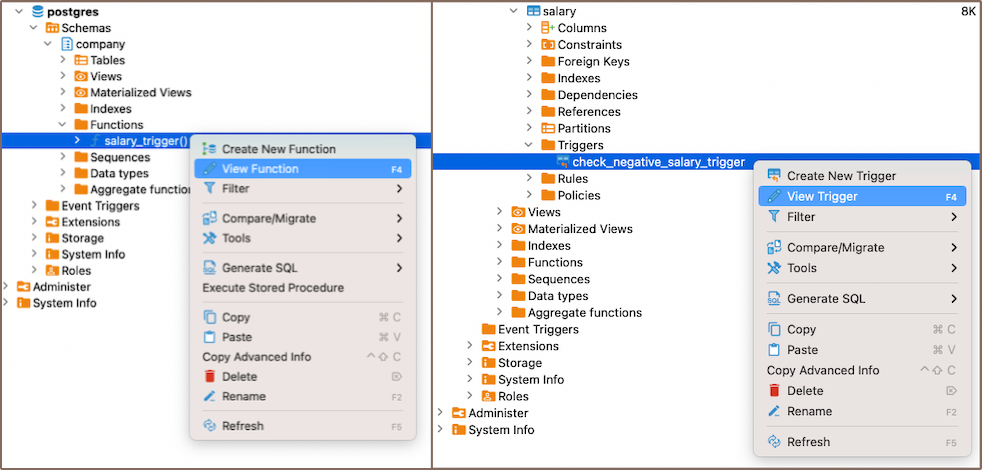
Delete
To delete a function or a trigger, navigate to the Database Navigator. Here, you will find sections for both functions and triggers.
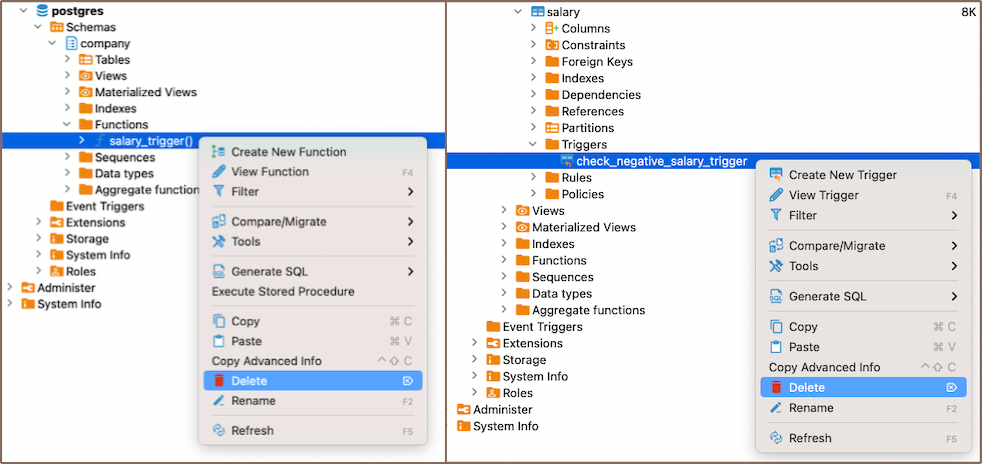
Locate the function or trigger you want to delete within the relevant section and select either Delete from the context menu, or you can select the necessary function or trigger and press the Delete key.
Restrictions
- Recursive Triggers: Some databases allow recursive triggers, where a trigger can call itself. This can lead to infinite loops and excessive system load if not handled correctly.
- Data Modification: Triggers can't be used to modify a table that is already being used (for reading or modifying) in the statement that invoked the function or trigger.
- Execution Order: The order in which multiple triggers are fired isn't guaranteed. This can lead to unexpected results if triggers have interdependencies.
- Performance: Triggers can slow down data modification operations because they add extra processing. They should be used sparingly and optimized for performance.
- Transaction Control Statements: In many SQL databases, transaction control statements (like COMMIT and ROLLBACK) are not allowed within trigger code. However, exceptions apply depending on the database system.
Note: these limitations can vary based on the specific SQL database system you are using, such as PostgreSQL, MySQL, Oracle, SQL Server, etc. Always refer to the specific documentation for your database system to understand its unique foreign keys behavior.

